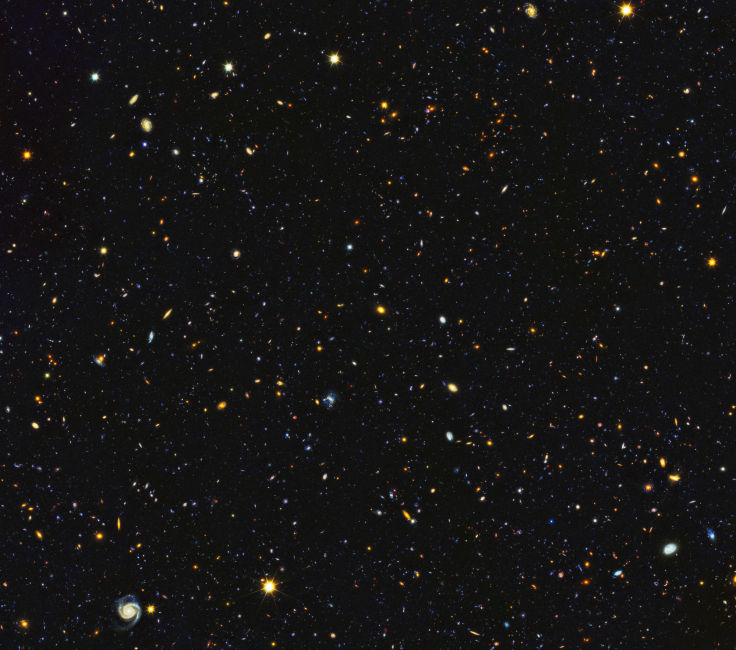NASA's Stunning Hubble Telescope Mosaic Shows 'Largest, Most Comprehensive History Book Of Galaxies'

NASA astronomers have created the largest and most comprehensive “history book” of the universe in a mosaic of photographs captured by the Hubble Space Telescope over a span of 16 years.
"We've put together this mosaic as a tool to be used by us and by other astronomers," Illingworth added. "The expectation is that this survey will lead to an even more coherent, in-depth and greater understanding of the universe's evolution in the coming years."
The wide portrait of deep-sky that depicts 265,000 galaxies that existed 13.3 billion to 500 million years since the big bang. The portrait is a mosaic of nearly 7,500 individual exposures. The large image displays the universe’s evolutionary history in a single wide-angle view. The portrait catalog the stunning sight on how galaxies change over time. It also shows the faintest and farthest galaxies that cannot be seen by the naked eye.
The project is called the Hubble Legacy Field that also integrate the images taken by several Hubble deep-space surveys, such as eXtreme Deep Field (XDF), the deepest view of the universe. It captures wavelengths from ultraviolet to near-infrared light enabling to observe the assembly of galaxies over time.
"Now that we have gone wider than in previous surveys, we are harvesting many more distant galaxies in the largest such dataset ever produced by Hubble," Garth Illingworth, leader of the team that assembled the image from the University of California, Santa Cruz, said. "This one image contains the full history of the growth of galaxies in the universe, from their time as 'infants' to when they grew into fully fledged 'adults.'"
The Legacy Field shows a wider view of about 30 times as many galaxies as in the previous deep fields. It also reveals a vast of unusual objects such as galactic “train wrecks” of the time when the universe is small and young galaxies that collided and merged with neighboring galaxies.
The mosaic is comparable to the diameter of the moon. Previous NASA project like XDF which captured deep space images covers less than of one-tenth of the moon’s width. Thus, bringing Legacy Field as the greatest image of the universe until future space telescopes are built.
"Such exquisite high-resolution measurements of the numerous galaxies in this catalog enable a wide swath of extragalactic study," Katherine Whitaker, catalog lead researcher from the University of Connecticut, said. "Often, these kinds of surveys have yielded unanticipated discoveries which have had the greatest impact on our understanding of galaxy evolution."
The Legacy Field is made possible through the collaborative effort of 31 Hubble programs of different teams.
"Our goal was to assemble all 16 years of exposures into a legacy image," Dan Magee, lead of data processing team from the University of California, Santa Cruz, explained. "Previously, most of these exposures had not been put together in a consistent way that can be used by any researcher.”
“Astronomers can select the data in the Legacy Field they want and work with it immediately, as opposed to having to perform a huge amount of data reduction before conducting scientific analysis,” Magee added.
The Legacy Field and its individual exposures can be viewed to the worldwide astronomical community called Mikulski Archive for Space Telescopes (MAST). MAST is an online databased for astronomical data NASA missions and is located at the Space Telescope Science Institute in Baltimore, Maryland.
Edwin P. Hubble once described that galaxies are “markers of space” century ago. By observing galaxies, scientists traced the expansion of the universe revealing clues about the physics and chemistry of the cosmos, and discovering conditions that led to the appearance of the solar system and life on Earth.
© Copyright IBTimes 2025. All rights reserved.





















